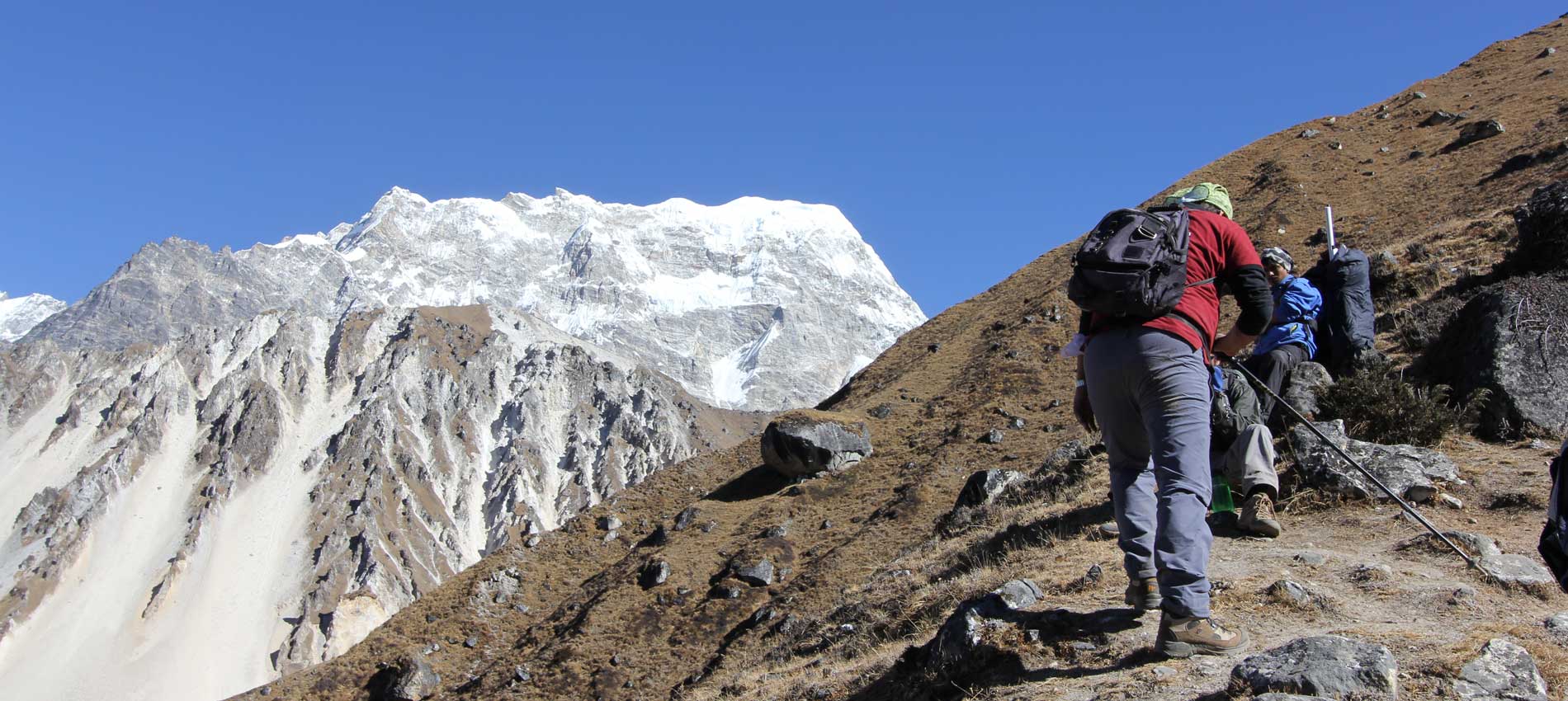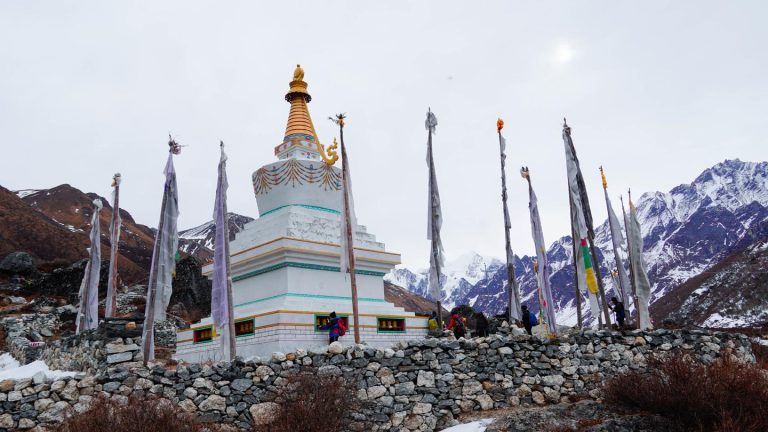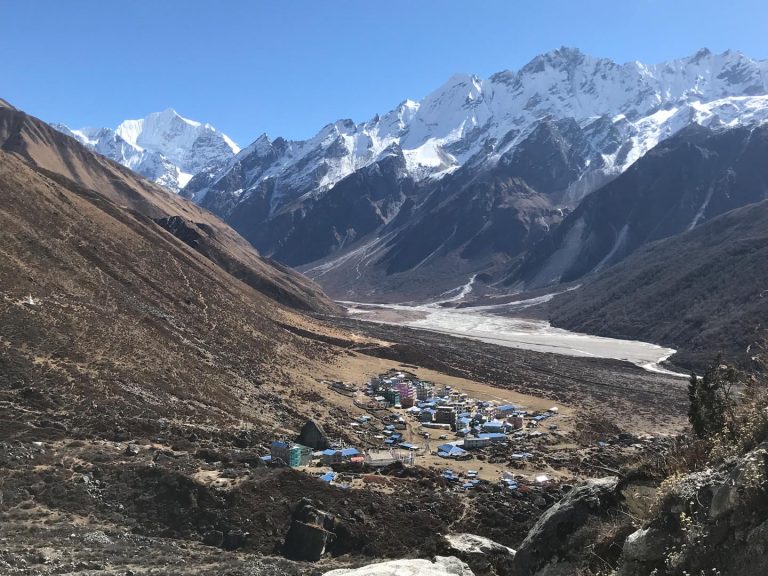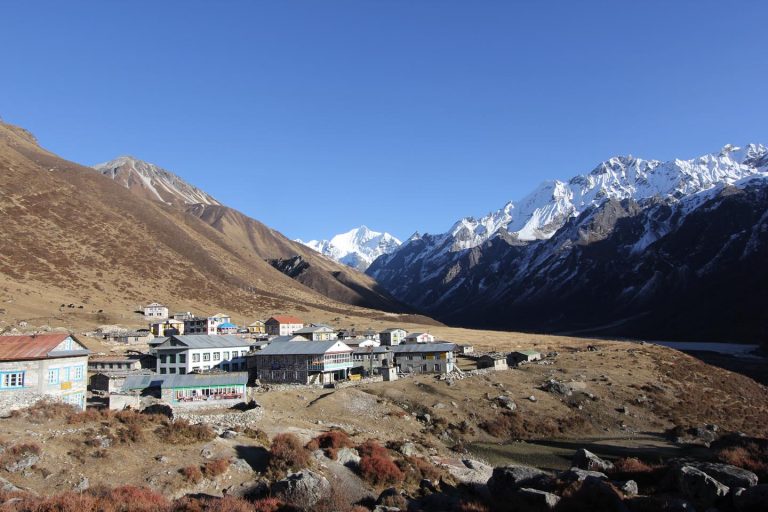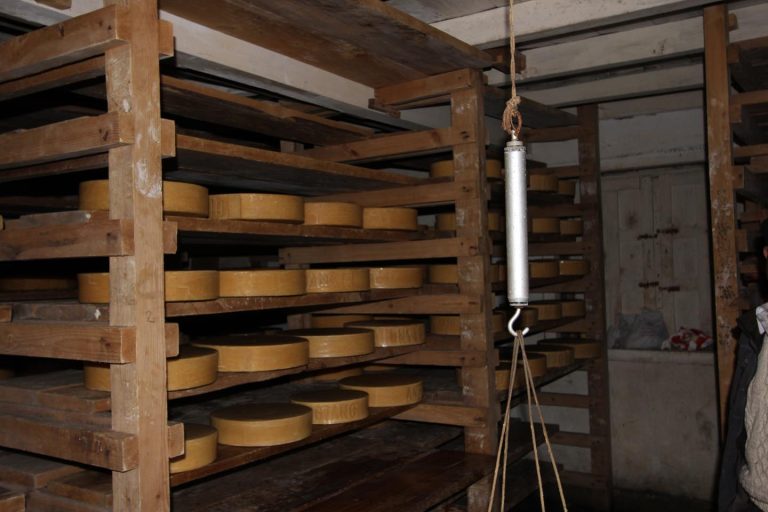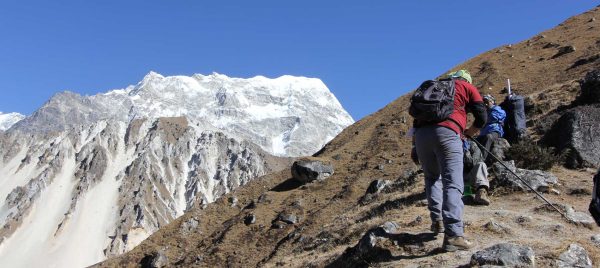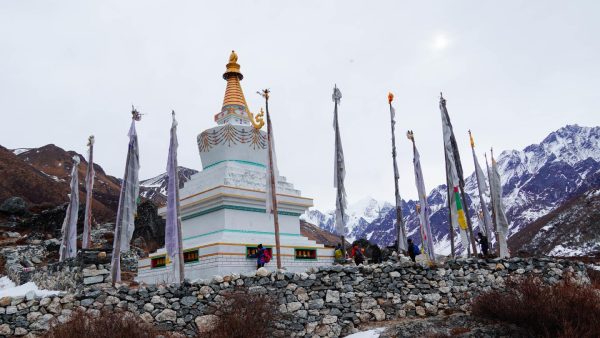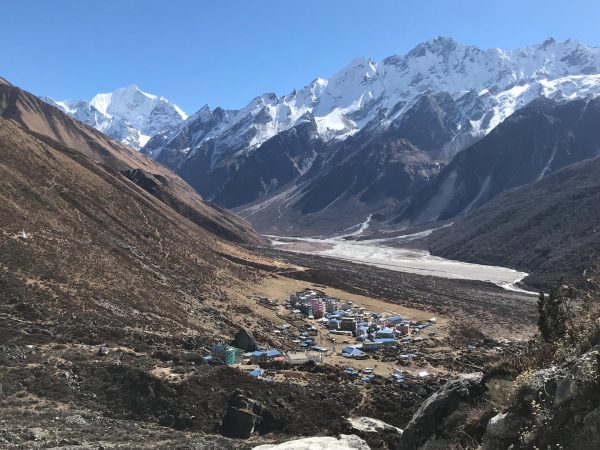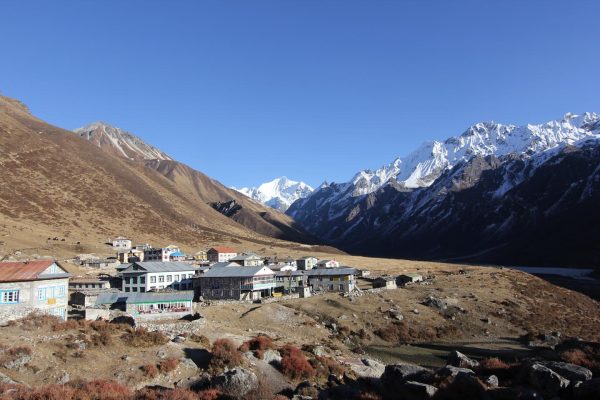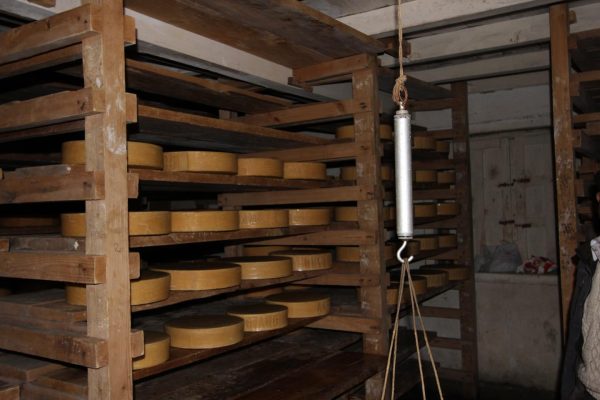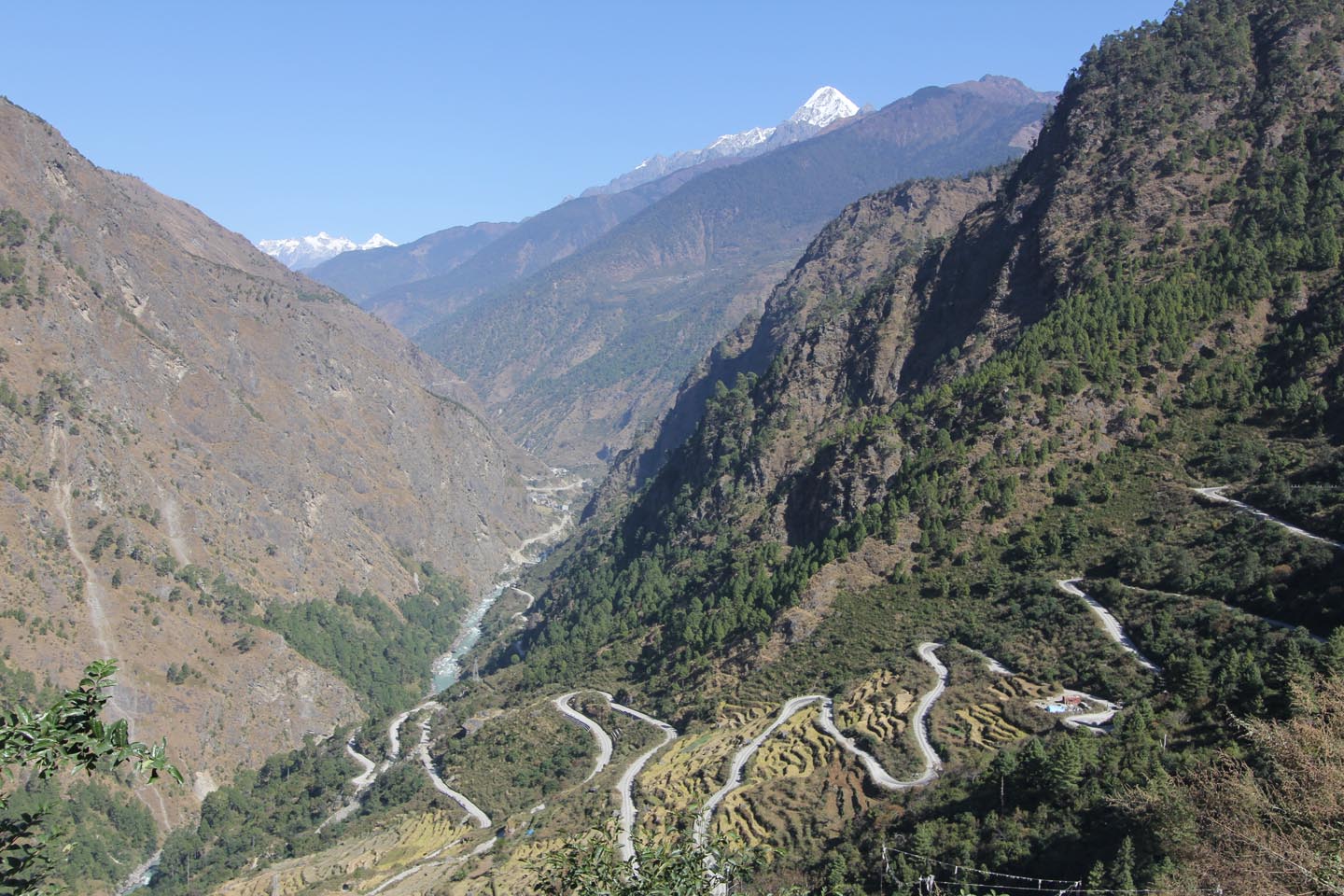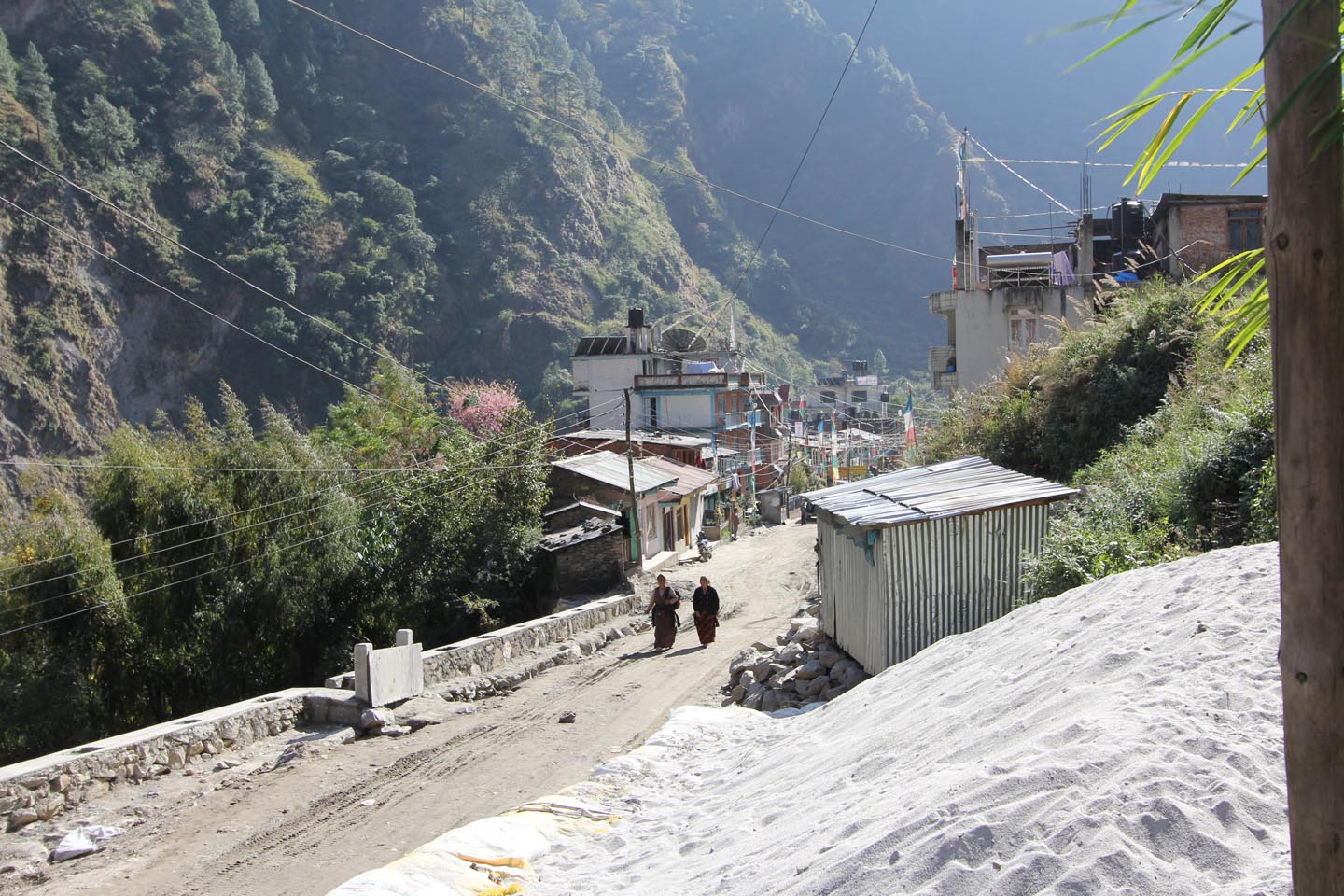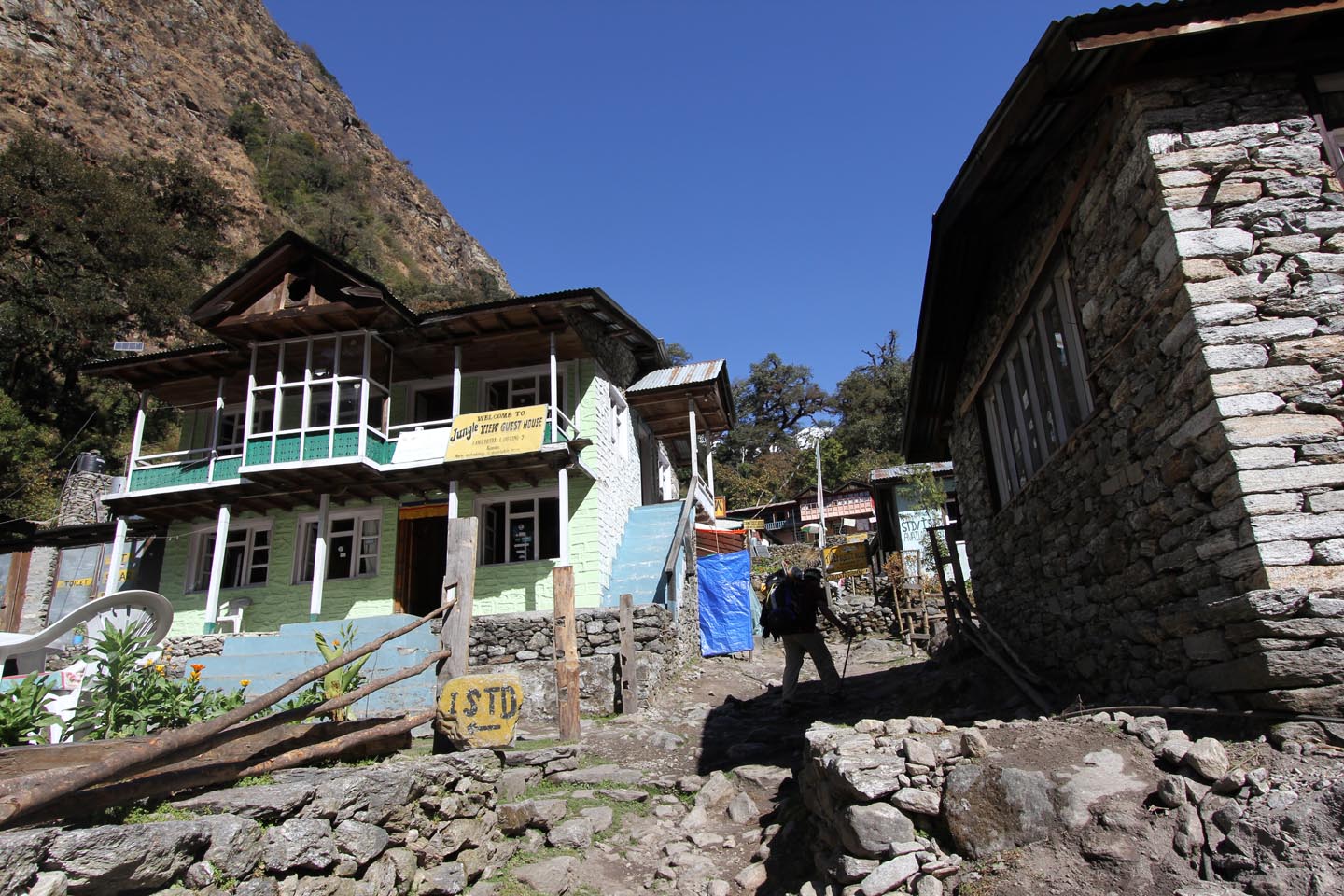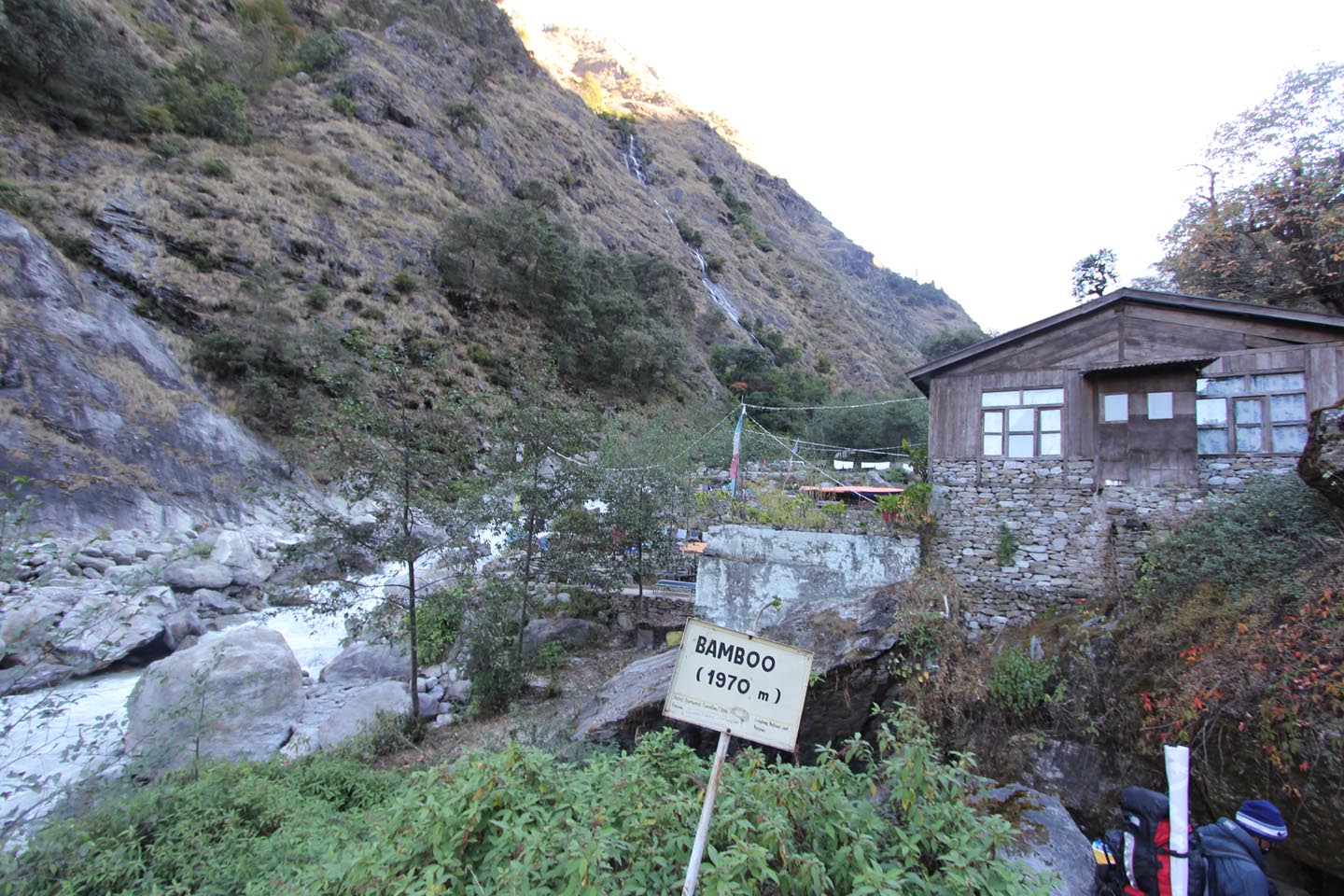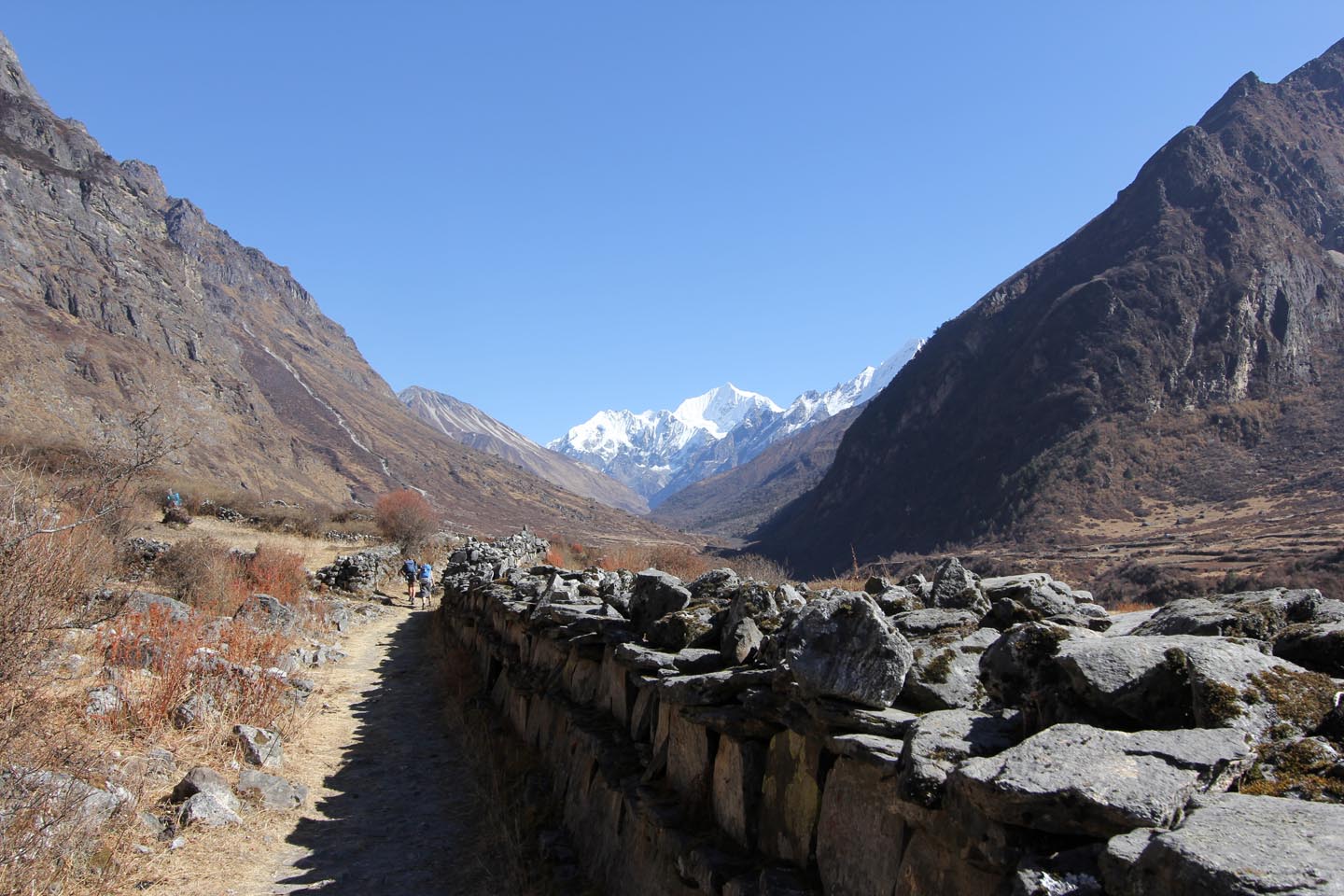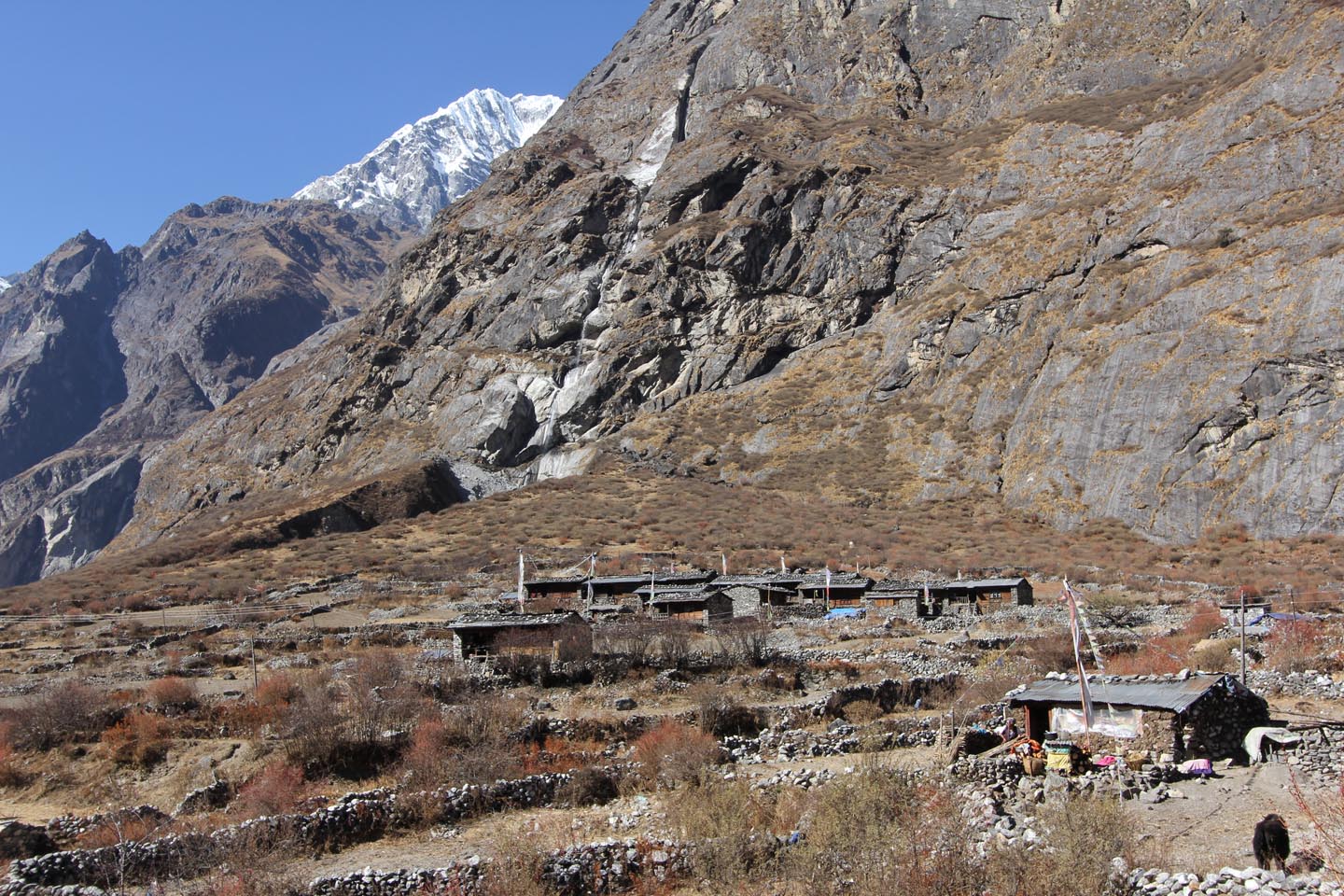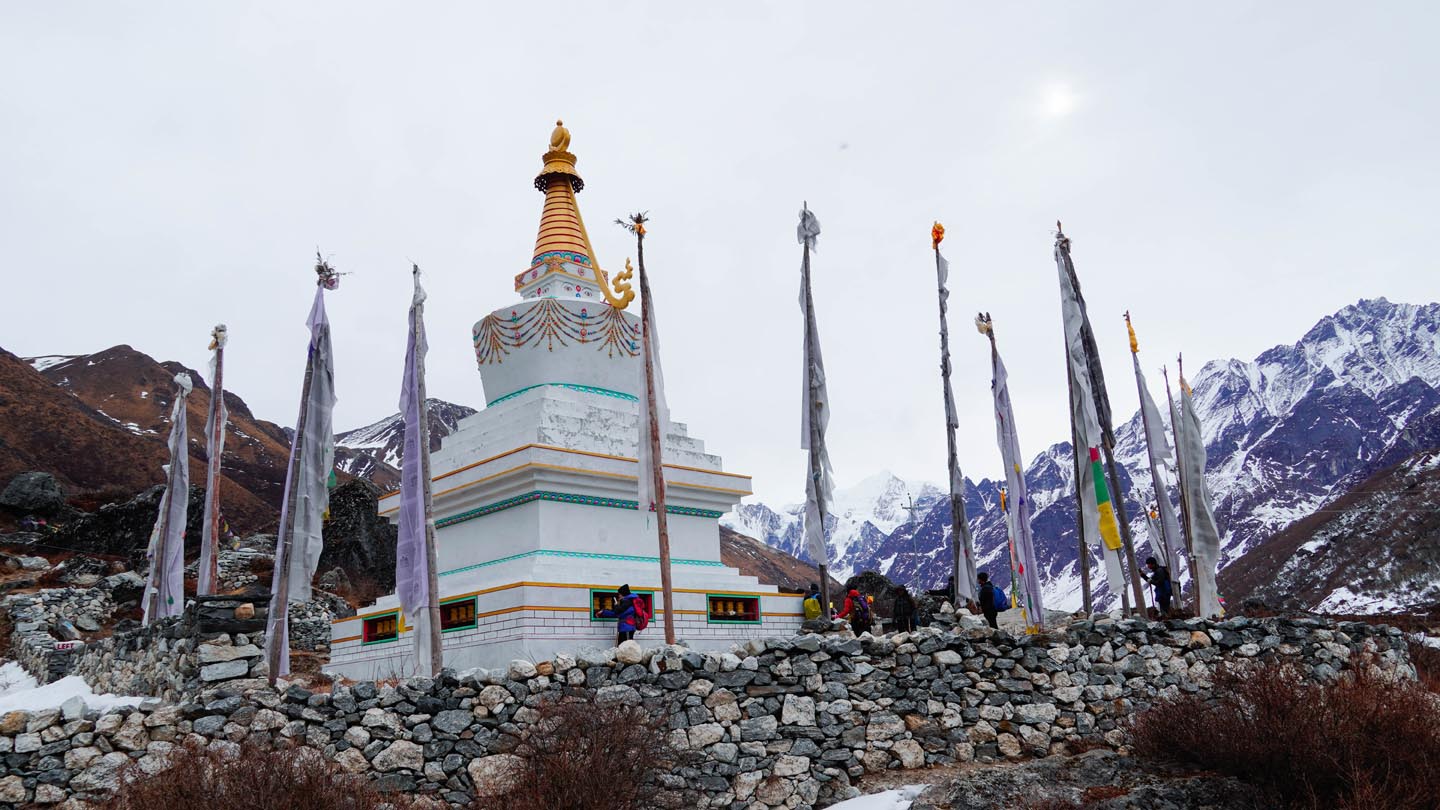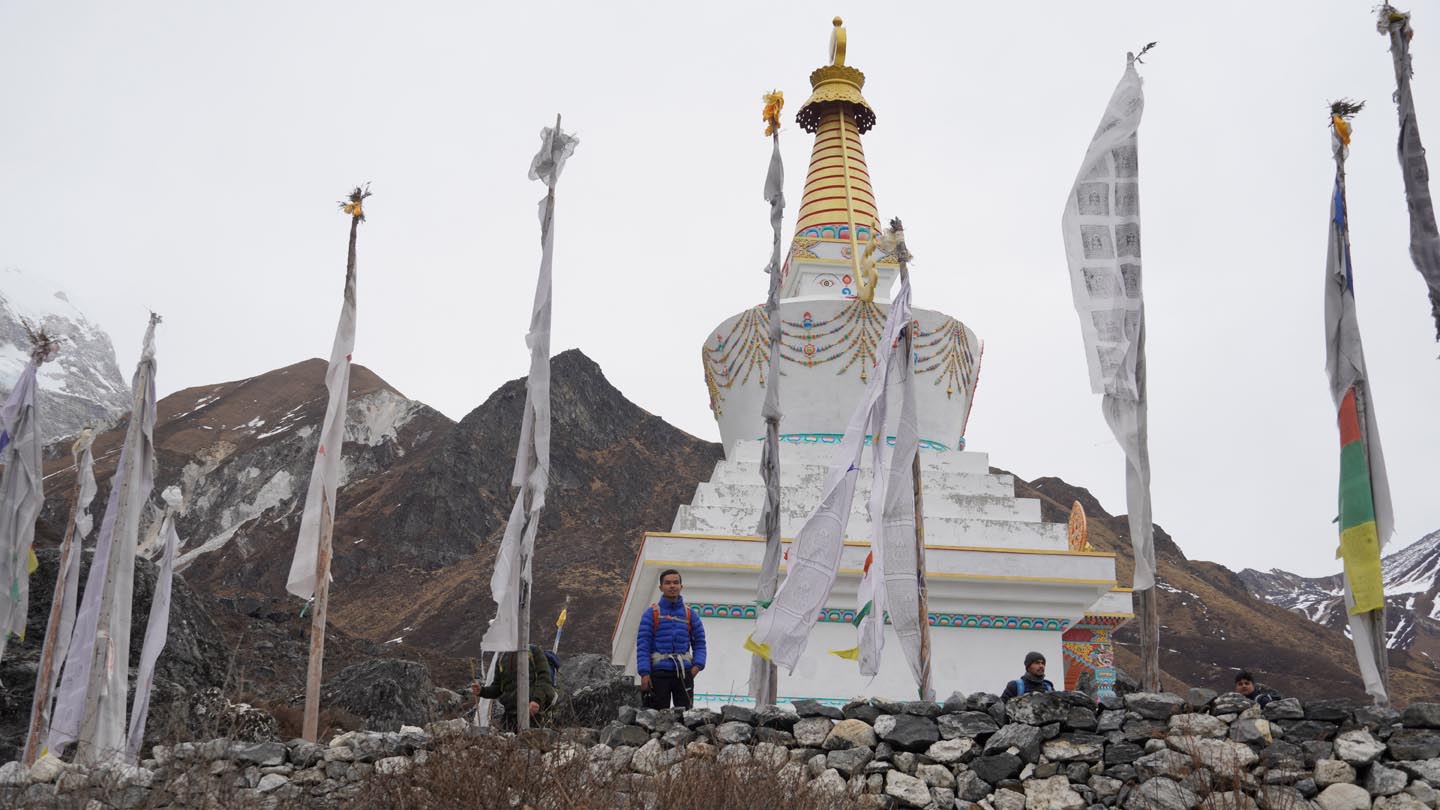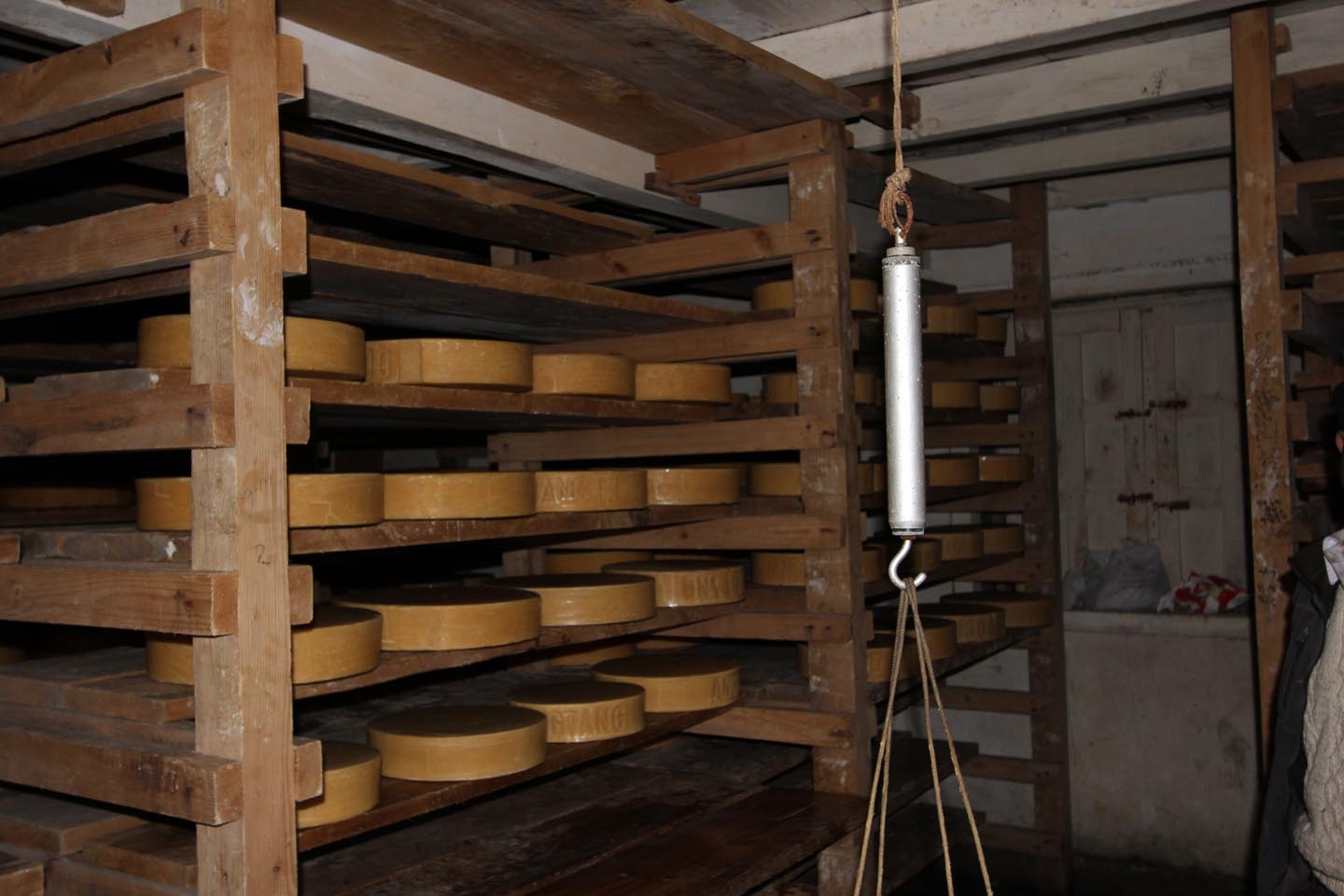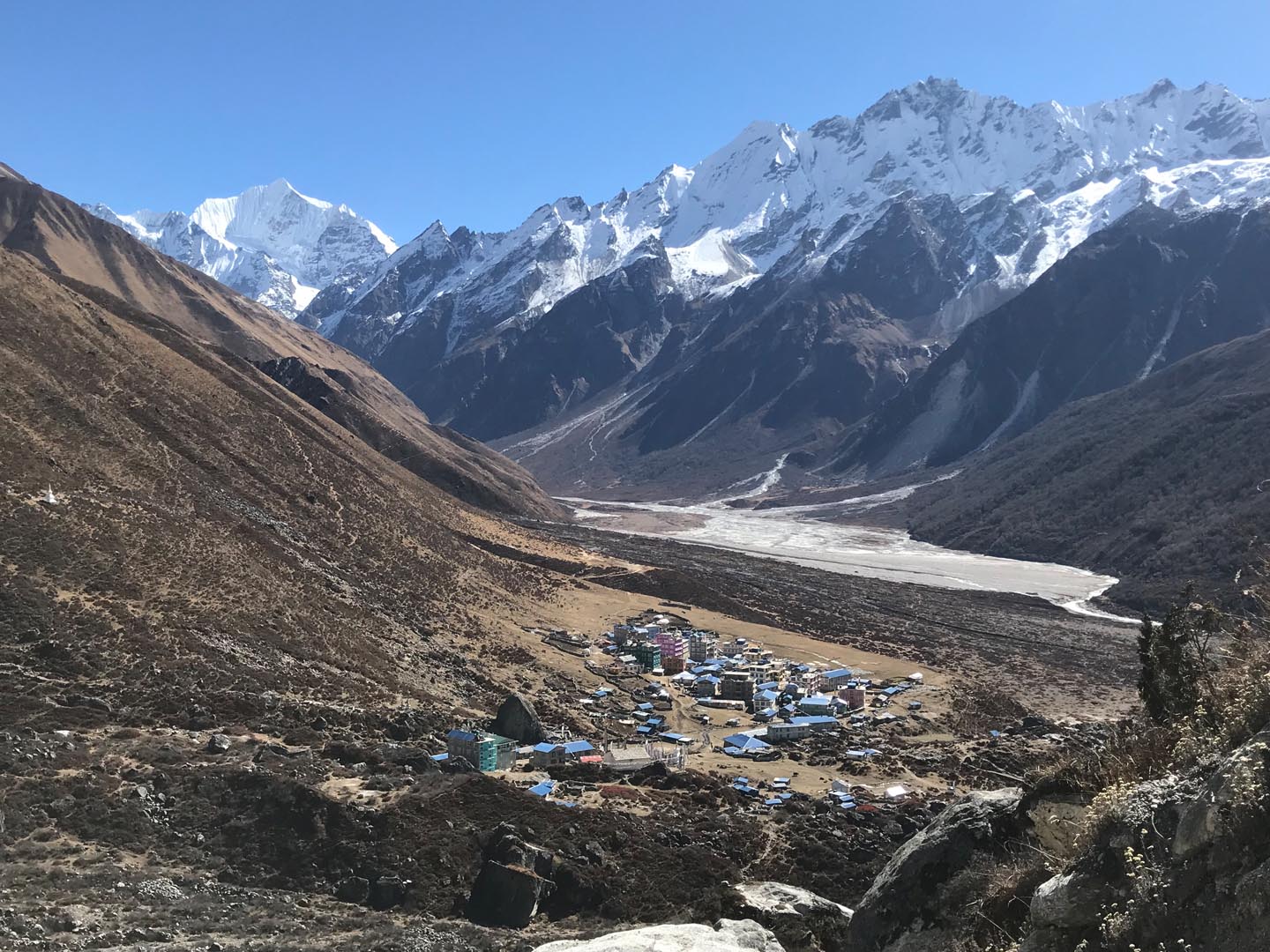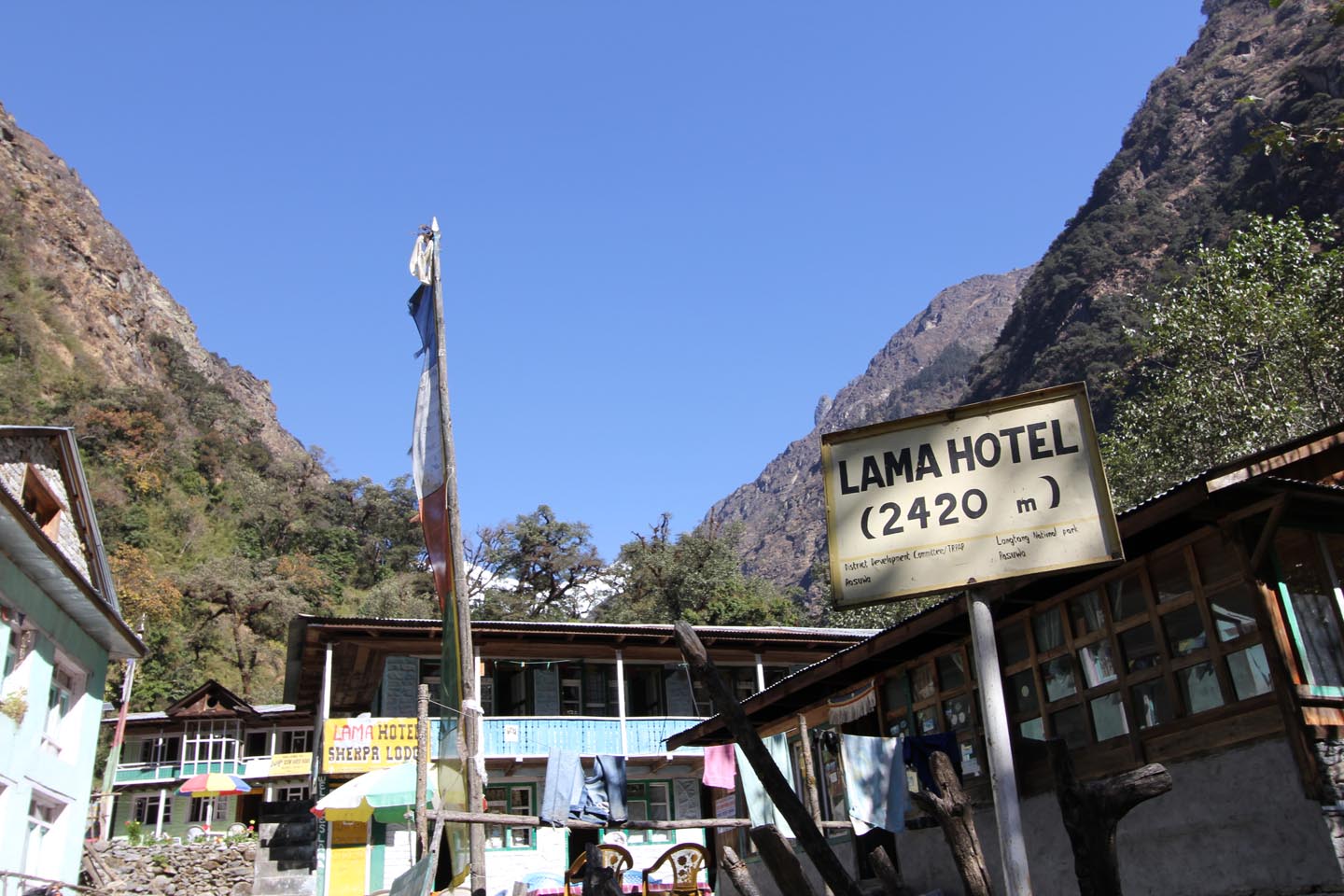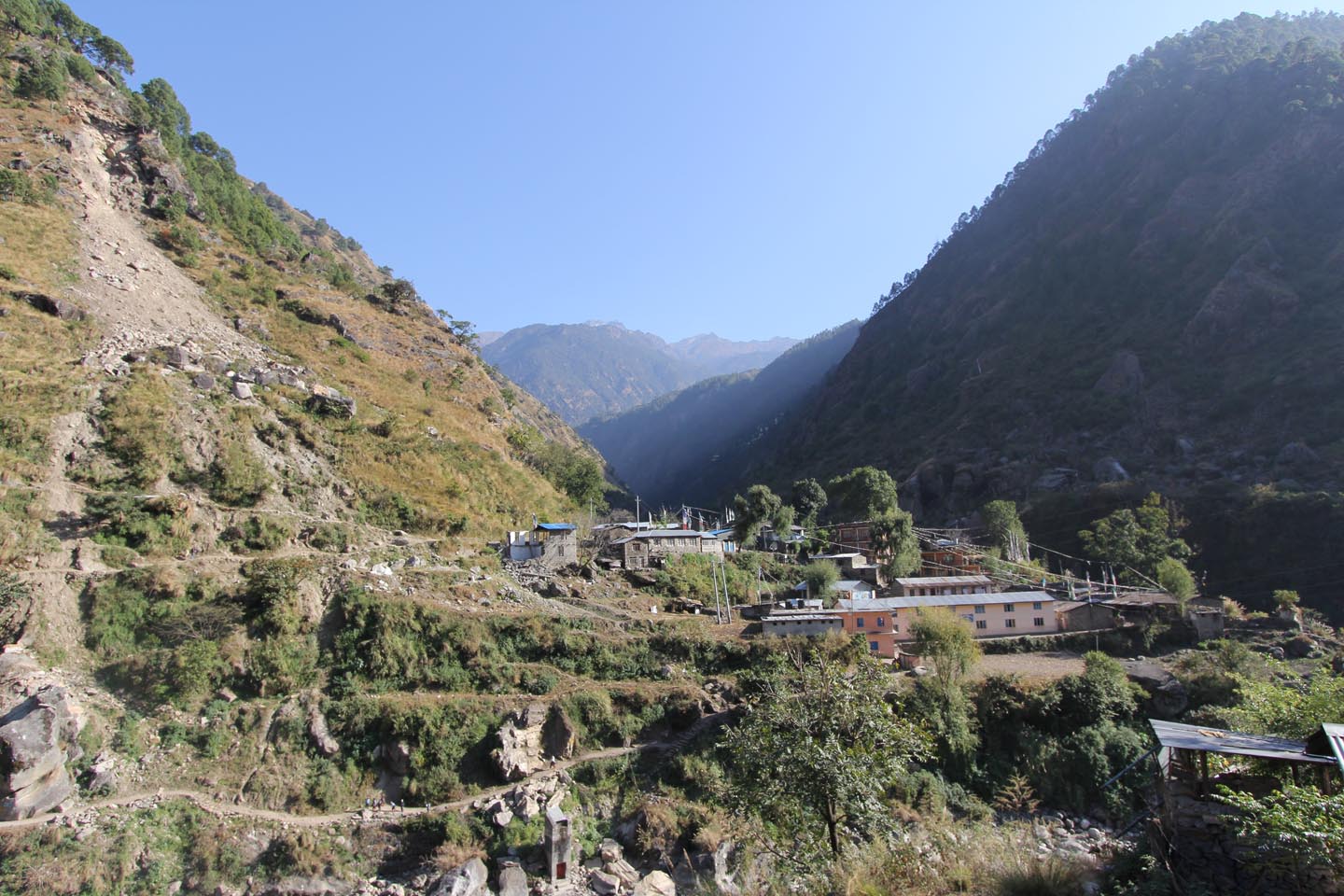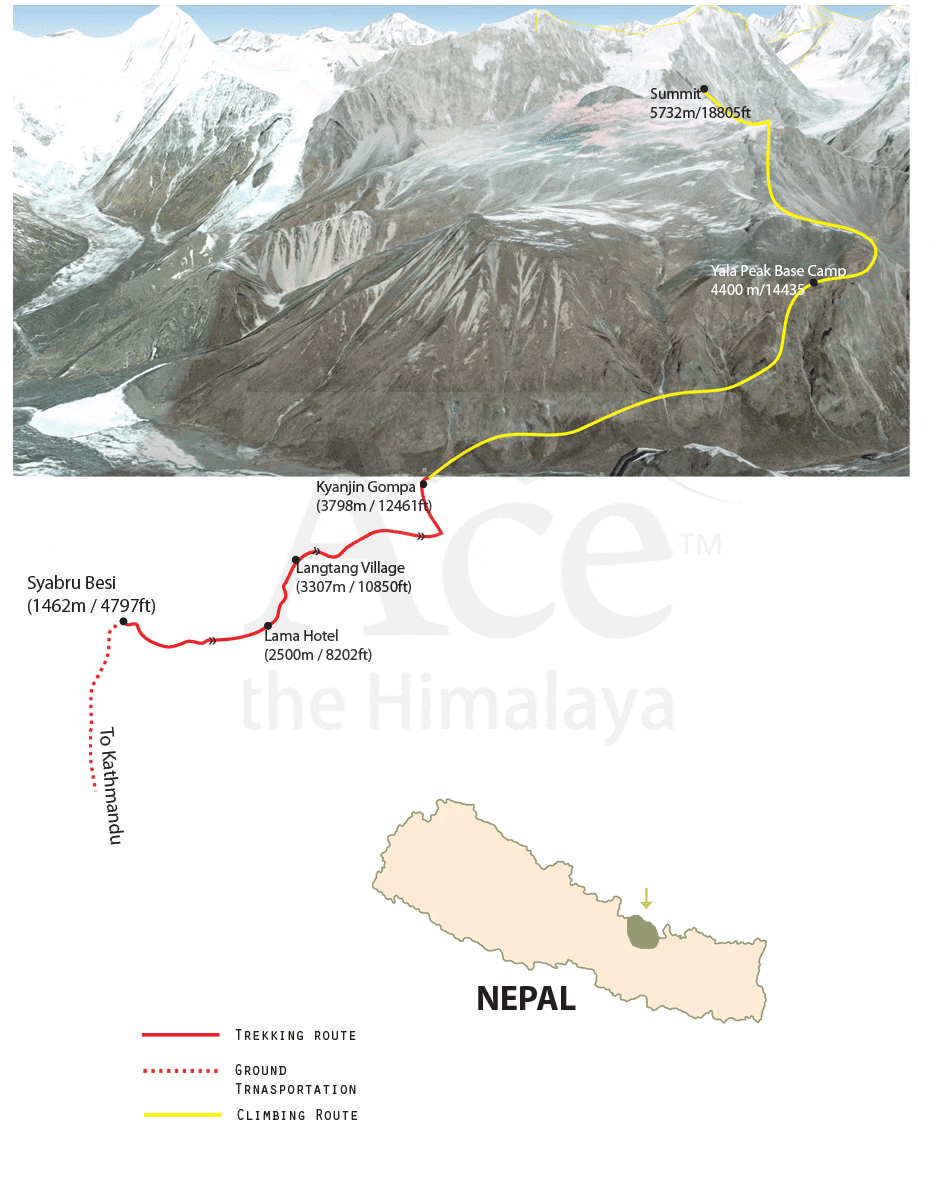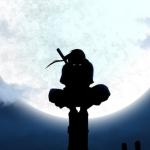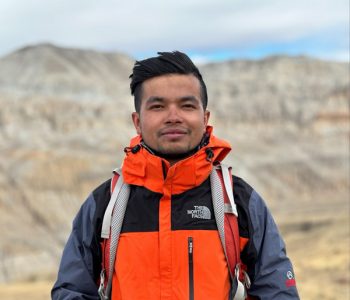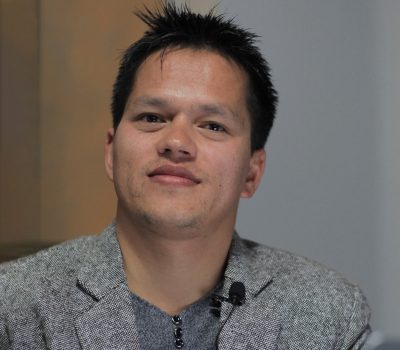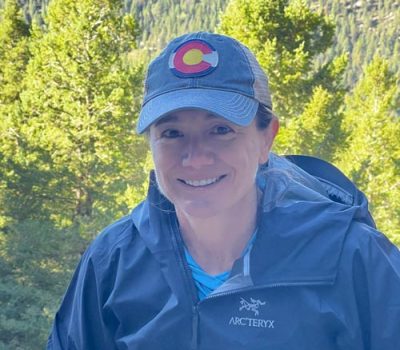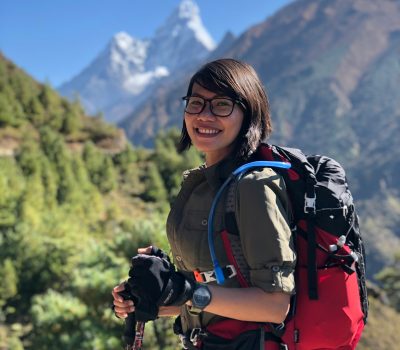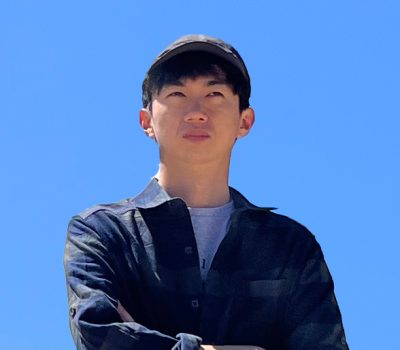Yala Peak Climbing - 13 Days
This Yala Peak Climbing offers you a spectacular view of Langtang, Lirung, Langsisha Ri, Gangchepo, Dorche Pakpa and many more mountain ranges from Nepal and Tibet.
Trip Highlights
- Visiting Langtang village & Kyangjin Gompa
- Panoramic view of mountain from top of the Tserko Ri
- Hiking up to Tserko Ri
- Summit of Yala Peak
- Yak Cheese factory
Yala Peak Climbing Overview
Embark on the ultimate Himalayan adventure with Yala Peak Climbing! Nestled within Nepal’s captivating Langtang region, this 13-day expedition is a harmonious blend of adrenaline-pumping ascent and mesmerizing natural beauty. The journey begins in Kathmandu, from where you’ll traverse through a captivating trail that leads to the Yala Peak Base Camp.
However, Yala Peak Climbing isn’t just about conquering heights; it’s an immersive cultural experience. As you trek through picturesque landscapes, you’ll have the opportunity to engage with local Tamang communities. Witness their age-old traditions, gain insight into their way of life, and create cherished memories that extend beyond the climb itself.
At an elevation of 5,500 meters (18,045 feet), Yala Peak’s summit unveils an awe-inspiring panorama. Shishapangma, Dorje Lakpa, Ganchenpo, Naya Kang, Tserko Ri, and Langtang Lirung majestically grace the horizon.
The feeling of accomplishment as you stand atop this majestic peak, surrounded by the Himalayan giants, is an indescribable moment that will forever stay etched in your memory.
One of the remarkable aspects of Yala Peak Climbing is its accessibility to climbers of varying skill levels. Whether you’re a seasoned mountaineer or a novice seeking a thrilling introduction to the world of climbing, Yala Peak offers a manageable yet exhilarating challenge.
Our experienced guides are dedicated to ensuring your safety and success, providing essential training in ice-climbing techniques and guiding you through the ascent.
This 13-day journey isn’t just an ascent; it’s an adventure that encapsulates the spirit of the Himalayas. It’s a chance to connect with nature, immerse yourself in local traditions, and push your boundaries. The fusion of challenging climbs, cultural exploration, and awe-inspiring views makes Yala Peak Climbing an experience of a lifetime.
Are you ready to take on the Himalayan heights and make your mark on Yala Peak? Whether you seek a transformative adventure or an adrenaline-packed challenge, Yala Peak Climbing has it all. Book your expedition now and embark on an unforgettable journey that will leave you with memories to cherish for years to come.
Short Itinerary
Arrival in Kathmandu airport (1,400 m/4,593 ft). Overnight at hotel.
Drive to Syabru Besi (1,462 m/4,796 ft) by Local Bus – 7 to 8 hours. Overnight at guesthouse.
Trek to Lama Hotel (2,500 m/8,202 ft) – 5 to 6 hours. Overnight at guesthouse.
Trek to Langtang Village (3,400 m/11,154 ft) – 5 to 6 hours. Overnight at guesthouse.
Trek to Kyanjin Gompa (3,830 m/12,565 ft) – 4 to 5 hours. Overnight at guesthouse.
Kyanjin Gompa exploration and acclimatization day. Overnight at guesthouse.
Trek to Yala peak Base camp (4,500 m/14,763 ft) – 5 to 6 hours. Overnight at Tented camp.
Summit Yala Peak (5,500 m/18,044 ft) and back to Kyangjin Gompa – 8 to 9 hours. Overnight at guesthouse.
Spare day in case of bad weather. Overnight at guesthouse.
Trek back to Lama Hotel (2,500 m/8,202 ft) 5 to 6 hours. Overnight at guesthouse.
Trek to Syabru Besi (1,462 m/4,796 ft) – 6 to 7 hours. Overnight at guesthouse.
Drive back to Kathmandu by Local Bus – 7 to 8 hours. Overnight at hotel.
Transfer to international airport for your final departure.
 Note
Note
Our standard itinerary might differ slightly due to unpredictable happenings and events out of our control. Factors such as flight cancellation/delay, unfavorable weather, natural calamities, newly implemented government rules, political affairs, trekkers’ health conditions, etc., are possible. Evaluating the situation’s possible solutions allow the trekking to resume as much as possible based on the best alternatives. In these times, we look for your cooperation and flexibility.
It is advised you arrive a day before the trip starts so you can rest and it also gives you time to buy clothing equipment and gear required for the trek. Also, it is best if you book your international flights with spare days in Nepal before and after your trek in case of any flight delays or cancellations due to weather. Moreover, you have options to customize this trip where you can add on a sightseeing tour in Kathmandu, other adventure sports or day trips around the country before or after the trek.
Departures & Availability
Looking for personalized experience? We organize privately guided journey which is mainly designed to fit your taste and interest. Please fill out the form below to get started.
Price Includes
Accommodation
- Twin-sharing/double accommodation in a 3-star hotel for 2-nights in Kathmandu including breakfast (Private room accommodation can be organized at an extra cost)
- Twin-sharing guesthouse accommodation during the trek for 9 nights
- Tented camp accommodation and all meals during the 1/2 nights stay at the Yala Peak Base Camp (We will provide fully water/wind-proof twin-share tents, dining tents, kitchen gear, dining table, chairs, toilet tents, etc.)
Meals & Drinking Water
- All your standard meals during the trek (Breakfast, Lunch, and Dinner) including seasonal fruits
- A farewell dinner on the last night in Nepal
- Purified drinking water during the trek using water filter or water purification tablets.
Transportation
- All (international and domestic) airport transfers on a tourist vehicle
- Private Tourist Vehicle transfer between Kathmandu and Syabru Besi
Guide and Staff
- Experienced, first-aid trained, government licensed, English speaking, and locally recruited Ace the Himalaya’s trekking guide (2 guides for group size more than 7 people)
- Porters during the trek for carrying luggage (1 porter for every 2 clients)
- Climbing Sherpa from Yala Peak Base camp to the Summit and back to Base camp.
- Wages, accommodation, meals, gear, insurance, and medications for all staff
Permits
- Langtang Conservation Area Park permits
- Yala Peak Climbing Permit.
Benefits and Takeaways
- 1 Ace the Himalaya’s duffel/kit bag, trekking map, sun hat, Buff (Neck Gaiter)
- Trip completion certificate
Equipment
- Group climbing equipment (Climbing rope, ice screw, snow bar and ice hammer)
Administrative & Taxes
- All administrative expenses and government taxes
Price Excludes
- Lunch and dinner in Kathmandu
- International flight fare and airport departure tax
- Nepal Entry Visa (Visa can be acquired easily after your arrival at Tribhuvan International Airport in Kathmandu with a fee of USD 30 for 15 days visa, USD 50 for 30 days visa and USD 125 for 90 days visa)
- Travel insurance along with high-altitude emergency evacuation coverage
- Any beverages including bottled and boiled water
- Tips to trekking staff, climbing Sherpa and driver
- Personal trekking gear and equipment
- Any expenses other than the Price Include section
Yala Peak Climbing Itinerary
Expand AllDay 01: Arrive in Kathmandu
Our airport representative will be receiving you at Tribhuvan International airport, Kathmandu and s/he will be displaying an Ace the Himalaya signboard outside the airport terminal. You will be then transferred to your respective hotel in our private tourist vehicle.
Day 02: Drive to Syabru Besi by Local Bus
Drive from Kathmandu to Syabru Besi takes about eight to nine hours by bus. You head north out of Kathmandu driving through scenic foothills and ridgeline vistas to Syabru Besi passing through Dhunche.
While passing along the road at the bank of Trishuli river you catch a glimpse of Ganesh Himal, terraces and green hills. As you pass through Dhunche you feel as if you are heading towards deep land. At the same time, you notice that the road is still under construction.
Day 03: Trek to Lama Hotel
Today, the first part of the trail crosses through Bhote Koshi and follows the Langtang Khola. This trail gradually climbs to Bamboo passing through the landslide area.
Afterward, your trek ascends gently to Rimche (2,400 m/7,874 ft) through Bamboo (1,960 m/6,430 ft) which lies at the bank of Langtang Khola. You can have lunch at this place if you like. Your trail is leveled to the Lama Hotel. En route, you could see red pandas, monkeys, and bears if you’re lucky.
Day 04: Trek to Langtang Village
The trek route follows Gumanechok, Ghoda Tabela literally it means the Horse Stable. After this, the trail is slightly gradual and beautiful in the valley with the grazing Yaks.
Langtang village is one of the very local and old villages along this trekking route and the view from here is more spectacular as we get closer to the mountain.
Day 05: Trek to Kyanjin Gompa
Today is a shorter walk but enough for acclimatization. The surroundings are interesting and we pass the famous Cheese factory. This beautiful valley lies in the lap of the Langtang Lirung, a valley worth exploring and lots of small peaks to climb.
Day 06: Kyanjin Gompa exploration day
Today is a day to rest and explore the area. You can visit the monastery and cheese factory then take a walk up the moraine to see the spectacular ice faces and tumbling glaciers of Langtang Lirung or ascend Kyangjin Ri (4,350 m/14,271 ft) which is the highest point of this trek, directly behind the village, for a breath-taking panorama of the Langtang peaks.
Day 07: Trek to Yala peak Base camp
To reach Yala Base Camp, you trek along the rocky glacier trail. You will be quite taken back by the views of Ganchenpo, Naya Kang, Tserko Ri, Yala peak and others. For today the accommodation will be in a tented camp and the food will be cooked by our professional camp cook.
Day 08: Summit Yala Peak and back to Kyangjin Gompa
Today is our main adventure day. An early start in the morning takes us to climb Pisang peak depending on weather conditions. At the summit of Yala peak, you will be stunned by the panoramic views of Shishapangma, Dorje Lakpa, Ganchenpo, Naya Kang, Tserko Ri, Langtang Lirung and many Tibetan mountains.
Day 10: Spare day in case of bad weather to climb Yala Peak.
This is the spare day for the climb just in case of the bad weather. Or we can have the rest day at the Kyanjin Gompa, visit the Langtang Glacier etc.
Day 10: Trek back to Lama Hotel
Day 11: Trek to Syabru Besi
Day 12: Drive back to Kathmandu by Local bus
After breakfast, we drive back to Kathmandu from Syabru Besi which will take some 7-8 hours by bus or Land cruiser depending on the group size.
Day 13: Transfer to international airport for your final departure
Today we conclude our trip. One of our airport representatives will accompany you to the International Airport for your flight back home. We bid you farewell and hope you’ll travel to Nepal again.
Gears and Equipment
Here is a list of what you might want to pack for climbing Yala Preak trek. Please take this as a starting point. You’ll need layers of warmer clothing during the winter. We provide a 75 liter duffel bag for you to use for the trek. It will be given to you during your pre-trip meeting in Kathmandu. The duffle bag is yours to keep. Also, you can rent sleeping bag and down jacket with us at the additional fee of USD 35 for each once you are in Kathmandu.
Yala Peak Climbing Gear
The Climbing equipment are much more expensive to buy. So, please let us know if you want to rent the equipments at the additional cost of USD 250 per person. The Following equipments are essential for climbing Yala peak.
- 1 Pair plastic shell mountaineering boots with high altitude liners
- 1 Pair of crampons (steel, no aluminum).
- 1 Alpine climbing harness.
- 1 Mountaineering axe with leash (sized properly for your height)
- 1 Ascender (right or left handed as appropriate)
- 1 Belay device (Black Diamond ATC or ATC Guide are good options)
- 2 D-Shaped locking carabiners
- 2 Non-locking carabiners
- 1 Pair expedition style gaiters (ensure fit over your boots)
- Scarf/Neck Gaiter/Buff (highly recommended)
- Ski goggles (optional)
- Climbing Helmet (mandatory)
General
- Four-season (zero degree) sleeping bag (We have rental sleeping bags available for an additional USD 35)
- Puffy down jacket (We have rental jackets available for an additional USD 35)
- Daypack (35-45 liters recommended) with rain cover
- Sleeping bag liner
Upper Body
- Sun hat or cap (We'll provide you with a free Ace the Himalaya baseball cap.)
- Knitted hat/Beanie
- Headlamp
- Sunglasses
Torso
- Technical fabric base layer (light for warmer months, heavy for colder months)
- Technical fabric short (2) and long sleeve (2) shirts
- Waterproof, windproof shell
- Fleece jacket or pullover
Lower Body
- Technical fabric base layer (light for warmer months, heavy for colder months)
- Hiking pants (2)
- Comfortable pants for inside the teahouses
- Waterproof, windproof shell
- Hiking shorts
Hands
- Wool or technical fabric liner gloves
- Hard-shell outer gloves (insulated for colder months)
Feet
- Wool or technical fabric warm socks
- Hiking socks
- Liner socks (optional such as silk)
- Trekking/hiking boots (waterproof recommended)
- Casual shoes
- Gaiters (lightweight for dust or heavy for snow in colder months)
- Ice Cleats /Micro Spikes
Undergarments
Note: The quantity of each article of clothing can be adjusted to suit the preferences of each participant.
- Technical fabric/quick drying is best for underwear (opportunities to launder during the trip)
- Sports bras (women)
- Pajamas or sleeping clothes
First Aid Kits and Medications
- (Note: Guides carry medications and first aid kits during the trip. However, personal kits and medications are highly recommended.)
- Sunscreen
- Lip balm
- ointment
Other Essentials
- Passport
- Extra copies of passport-sized photos
- Reusable water bottle
- Toiletry kits
- Water purification tablets or UV water purifier (if you plan to treat water)
- Hydration bladder
- Towel
- Pillowcase
- Toilet paper (2 rolls)
- High protein snacks (such as protein bars or nuts)
- Waterproof/dry bags for carrying important documents and money
- Airline tickets (Please leave a copy at our office in Kathmandu. This can be useful if there is a change in the date of the flight.)
- Earplugs
- Trekking poles
Optional
Once in Nepal, if you have the time, you can purchase supplies and gear for hiking. Thamel, Kathmandu’s tourist hub, is home to many shops where you can get a variety of reasonably priced trekking equipment.
- Power bank or extra batteries
- Cameras and mobile phone
- Cards/book
- Binoculars
- Whistle
Important Information
- We give you a free duffel bag and baseball cap during your pre-trip meeting in Kathmandu. The duffel bag will be used to pack your trekking supplies.
- For every two participants, we assign one porter. The duffel bag, which should weigh around 10 kg/22 lbs, will be carried by the porter throughout the walk.
- To carry your daily necessities like cash, crucial papers, a water bottle or bladder, a camera, toiletries, sunscreen, a notebook, clothing, etc., you must have your own daypack (with a waterproof cover).
- You can store your luggage (non-trekking items) at the hotel in Kathmandu.
- A down jacket with a hood is a must for altitudes above 4,000 m to keep warm. You can rent a down jacket for USD 35. Please note that in case of loss or damage, you need to reimburse the cost of USD 100 per item.
- You can rent a 4-season sleeping bag for USD 35. Please note that in case of loss or damage, you need to reimburse the cost of USD 100 per item.
Note: Some clothing, especially form-fitting, figure-hugging items made of elastic material (like yoga pants), may offend locals. Therefore, if you choose to wear these clothes for comfort, please make sure to wear something over them.
Trip Video
FAQs for Yala Peak Climbing
General
Why trek with Ace the Himalaya?
Ace has a reputation for successfully leading treks with knowledgeable leaders and staff taking care of all your travel needs. We are a certified sustainable travel company that also endorses the idea of giving back to the community by participating in various philanthropic activities. Here are 17 reasons why you should choose Ace the Himalaya for your next adventure!
Is Nepal open to travelers following the Covid-19 pandemic?
Indeed, Nepal is entirely open. Travelers are welcome in Nepal without any restrictions. Arriving travelers can obtain a visa on arrival at the Kathmandu airport as well.
What are the conditions to travel to Nepal post Covid-19?
Traveling to Nepal is now hassle-free. You don’t need a vaccination certificate or negative PCR test, but check with your airlines and transit countries for any specific requirements.
We suggest you look at the Nepal immigration site https://www.immigration.gov.np for the most up-to-date information.
What additional documents do I need?
- Two passport-sized photos (2×2 inch) to give to our office staff
- A copy of your international flight ticket to give to our office staff
- A copy of travel insurance to give to our office staff
What should I know about booking my flights to/from Nepal? Do I need to plan extra days in case of delays?
The best course of action is to add a day or two before and after your intended trek days in case of flight delays or cancellations. It also gives you time to buy clothing equipment and gear required before your trip.
Please be aware that Ace the Himalaya is not responsible for any inconveniences or missed international flights resulting from unforeseen events like airport changes, flight delays or cancellations, etc.
Are your climbing guides trained and have done the Yala peak previously?
Yes, all our climbing guides hold license from Nepal Mountaineering Association. They are experienced in many 6,000 and 7,000 meters peaks and have also been to 8,000 meters peaks a few times.
Can the guide speak English?
Yes, our guides can speak English. Most of them start their careers as porters and work for 3 to 4 years before becoming trekking guides. Their English skills are based on real-world experience rather than formal education. While they are able to communicate effectively, please note that English is not their first language, so their fluency may not be on par with native speakers. They will also assist with communication, especially since many locals, like shopkeepers and teahouse hosts, may not speak English.
Weather and Temperature
What is the best time for Climbing Yala Peak?
The best seasons are autumn (Mid-September to November) and spring (March to early June). This trip is possible year-round, and we can organize it when it suits your schedule.
However, we generally suggest doing this trek in the favorable seasons and keeping away from the rainstorm season (July and August). In the cold months of January and February, the temperature can be a little harsh in the mountains.
However, some prefer to travel during these months as it is less crowded given that you are well prepared with appropriate winter wear and other gear.
What kind of weather and temperature can I expect while trekking?
One of the most unpredictable elements of the Mountains is the weather. If you’re not properly prepared for the twists, turns, and volatility of the conditions that can occur in this breathtaking region, you might find yourself in an uncomfortable and unpleasant situation. Here are some weather basics to help ensure that you come to the Himalayas as well-equipped and prepared to face anything.
Generally speaking, the nights are much cooler than the daytime hours in the Langtang region. Many first-time trekkers are surprised to learn about the incredible range that may occur on a given day. During the day, the thermometer could reach temps as high as 25 degrees C (77 Degrees F), only to dip down as low as -20 degrees C (-4 Degrees F) in less than 24 hours. While there’s no way to know exactly what each day in the mountains will bring, the weather and temperature ranges tend to be somewhat predictable based on the month and season.
Spring – March/April/May/June
Spring happens to be one of the best times of the year to visit the Langtang region, although because of this, it can become somewhat crowded. The beautiful clear blue sky can be seen and the many different species of flowers are visible at the lower altitude.
During springtime, the average temperature is 20 degrees C (68 Degrees F), with a maximum of 25 degrees C (77 Degrees F), during sunny days and a minimum of -15 degrees C (5 Degrees F), in the morning and at night for areas above 4000 meters.
Monsoon Season – July/August through Mid-September
This season is not really recommended to travel as it rains in the lower altitudes, below 3500 meters. In areas above 4000 meters, it rains sometimes and although it is also sometimes dry, very few people travel during this season. There are positive sides of trekking during the monsoon months as the excess rainfall can provide ample chance to see spectacular views of the waterfall and it’s also the best season to avoid the crowds.
During Monsoon, the average temperature is 22 degrees C (71.6 Degrees F), with a maximum of 30 degrees C (86 Degrees F), during sunny days and a minimum of -5 degrees C (23 Degrees F), in the morning and at night for areas above 4000 meters.
Autumn – End of September/October/November
Similar to springtime, autumn in the Langtang region is also a crowded season, but it’s one of the best times to trek. While it lacks the beauty of flowers, the clear blue sky can be seen, affording incredible views from just about every angle.
The average temperature during the fall is 17 degrees C (62.6 Degrees F), with a maximum temp of 20 degrees C (68 Degrees F), during sunny days and a minimum of -15 degrees C (5 Degrees F), in the morning and night, for areas above 4000 meters altitude.
Winter – December/January/February
Winter starts from mid-December till mid-February. People still like to trek this month due to fewer crowds. The view is still good but foggy so having extra days is highly recommended during this period.
The average temperature during the winter is 10 degrees C (50 Degrees F), with a maximum temp of 17 degrees C (62.6 Degrees F), during sunny days and a minimum of -20 degrees C (-4 Degrees F), in the morning and night, for areas above 4000 meters altitude.
The above temperature is based on the outside of the guesthouse temperature. No need to worry about the cold temperature as we provide the sleeping bag plus the extra blanket to make sure our clients are warm enough during their time of need.
What is the temperature rating of the sleeping bag that you lend to trekkers?
The temperature rating of the sleeping bags that we rent to trekkers is about -10°C (14°F). Also, our guides can obtain extra blankets if needed at the teahouses.
Arrival and Visas
Is it possible to obtain a visa for Nepal upon arrival at the airport?
Yes, you can obtain a Nepal visa upon your arrival at the airport. There are kiosks in the arrival hall that you use to complete the necessary forms. The cost is USD 30 for a 15-day tourist visa, including numerous entries, or USD 50 and USD 125 for a 30-day or 90-day tourist visa including numerous entries respectively. You should carry cash (USD) with you to pay your visa fees quickly and easily, as digital payments are frequently unavailable.
To save time, we recommend filling out the online visa application form in advance. Applying online 2 weeks before your arrival will expedite the process at the airport. For detailed guidelines, please refer to our blog titled Guidelines for Online Tourist Visa Form in Nepal.
Who will come to pick me up at the airport upon my arrival?
Our staff will be waiting for you outside the airport terminal with our signboard (Ace the Himalaya). You will be accompanied to a hotel in a private tourist vehicle.
Payments and Extra Costs
Can I rent climbing equipment's from your company?
Yes, you can rent the needed climbing equipment at the additional cost of USD 200 per person.
How much additional money do I need per day?
Typically, USD 15 to 20 per person per day will be sufficient. This is to purchase water, tea/espresso, snacks, and hot showers in the mountains and for lunch or dinner in Kathmandu. Additionally, if you want to buy souvenirs or native Nepali goods, you can bring extra cash with you.
Is it possible to use credit cards in the places I visit during the trek?
Nepalese Rupees cash is preferred to a credit card while trekking in the mountain region. Exchanging your cash into Nepali Rupees in Kathmandu before the beginning of the trek is ideal. This can be accomplished at the airport, at banks, or at your hotel. Please note the hotels will exchange up to about USD 100 for each transaction only. There are ATMs up to Namche Bazaar but can be unreliable. The currency exchange rate is better in Kathmandu.
Is it possible to reserve a trip now and pay a deposit later, or do I have to pay a deposit at booking/reservation?
When you book, you must pay a 30% deposit to secure your itinerary. The remaining balance can be paid upon your arrival at Kathmandu or before arrival. US Dollars cash and credit cards (Visa, Master, and American Express) are accepted once in Nepal. Please note a 4% transaction fee will be added for all credit card transactions.
How do I pay the remainder of my balance upon arrival in Kathmandu? US Dollars cash or credit card?
You can make payments via US Dollars cash or credit card (Visa, Master, and American Express). A 4% transaction fee is added if paying with a credit card. Thus, we encourage you to pay with USD cash if you are planning to pay upon your arrival in Kathmandu.
We prefer you pay with larger bills (USD 50 or 100). Please note that the cash should not be older than 2009 and in good condition, as banks do not accept worn, torn, or crumpled bills.
How are the ATM and money exchange facilities in Kathmandu?
There are ATM and money exchange facilities almost every few meters in Thamel, where you will be staying in Kathmandu. So, you can easily use your cards to cash out limited sum of money to which a minimum charge is deducted by the ATM facility itself. You can easily exchange your foreign currencies in currency exchange centers for an exact rate.
Who Can Trek?
Do I need any prior climbing experience?
Yala Peak climbing involves trekking as well as climbing with all the expedition equipment. Though previous climbing experience certainly helps yet no prior experience is required for Yala Peak climbing.
However, anyone with a knee, ankle, heart, or lung pre-medical history needs to seek medical consent before considering Yala Peak. Moreover, at Yala base camp our climbing Sherpa guide will organize a basic climbing training session on required climbing skills and the use of climbing equipment.
Is trekking to mountain regions safe for solo female travelers?
It is safe for a female to trek alone in Nepal. Nepal is usually regarded as a safe nation for female visitors traveling alone. It is entirely safe for a solo woman to trek with Ace the Himalaya on any of our treks.
Physical Fitness
How challenging is Yala Peak Climbing?
This is not really a technical peak but you need good stamina for a long day’s effort while climbing it. You can climb Yala peak without any previous climbing experience and skills in using climbing equipment but knowledge of using equipment and previous experience would be beneficial although not mandatory because basic pre-ice climbing training is provided to you in Base Camp to make you skillful in using climbing gears such as ropes, ice pick, harness, and crampons.
How quickly do you walk on the trail?
The average walking speed for a reasonably fit person is 4 kilometers per hour. At higher elevations, it is highly recommended that you walk slowly to help with acclimatization.
What kind of physical training is necessary for trip preparation?
To prepare for a challenging trip like this you should begin training at least two to three months before your departure. As a guideline, an hour of aerobic exercise three to four times per week would be considered a minimum requirement. The best preparation is bushwalking involving relatively steep ascents and descents.
What are the physical standards that I need for the trek?
Participants in good physical condition should be able to complete this trek. If you are not physically active, we advise starting an exercise regimen two months before the trek that includes at least an hour of walking at an incline, running, or biking four to five times a week.
Incorporating hiking into your workouts is ideal. It is advised to speak with a doctor before making travel arrangements if you have any health conditions that could affect your ability to complete the trek.
Trek Preparation and Packing
What are the procedures after I make my deposit?
After making the deposit, one of our staff will email you for further information. We will require a copy of your passport photo page and your arrival/departure flight details. We will also provide you with additional trip information.
What sort of insurance do I need? How can I obtain a policy?
Travel insurance is mandatory for our hiking itineraries. We require your policy have medical evacuation coverage for the maximum elevation of your itinerary. Insurance may also cover additional costs in the event of a flight delay or cancellation caused by bad weather, medical costs, theft, loss, and damage to your items while traveling.
Travel insurance can be obtained online by one of several travel insurance companies. Please note that insurance obtained from an airline at the time of booking your flight may not cover medical evacuation coverage.
What are the necessary items that I should pack for my trip?
You can find the necessary items to pack for the trek on the Equipment Tab. Gear and equipment can be bought or rented upon your arrival in Kathmandu. If you plan on buying or renting gear in Kathmandu, please allow extra time.
Do you provide sleeping bags or down jackets for rent?
Yes, we do provide sleeping bags or down jackets for rental costs of USD 35 each. Do let us know before initiating the trek and we shall provide items. You can view the photos of the gear at this link: Photos of the Gear.
What type of bag will the porters carry?
We provide you with a free duffel bag of 70 to 80-liter capacity that our porters will carry. The maximum weight that porters can safely carry is 30kg, and each porter is assigned to two people.
However, each porter carries a maximum of 25 kg/55 lbs in total during the trek period. Your duffel bag, which should weigh no more than 12.5 kg/27.56 lbs per client, will be carried by the porter throughout the trek.
What type of daypack should I bring?
We suggest a 30 to 40-liter capacity daypack. Wider straps and hip belts are recommended to assist you in carrying weight evenly and reduce pain.
What about my passport, medications, and belongings?
Bring copies of your passport, insurance papers, and other essential items in your carry-on during your flight. If you need to take medications daily, keep them in your daypack with your other essential possessions. You can store other non-trekking essentials in the office of Ace the Himalaya or at the hotel in Kathmandu.
Accommodation
What kind of accommodation is available on this trip?
In Kathmandu, we use three-star hotels including breakfast. We use Hotel Thamel House, Gaju Suite Hotel, Hotel Jampa, or comparable-class lodging in Kathmandu. Teahouses with clean rooms are used during the trek.
For the night spent in Yala peak base camp, shared tented accommodation is provided (Two Persons at each tent). You can book a private tent by paying an additional cost of USD 200 for the nights you spend in base camp at Yala peak.
Is it possible to have private rooms while trekking or while in Kathmandu?
A private room in the teahouses cannot be guaranteed during peak season. During the non-peak season, the teahouses may provide a private room without any additional cost. The accommodation during the trek will remain very basic with twin sharing rooms and occasionally dormitory rooms for our trekkers.
We can arrange for a private room while in Kathmandu for an additional cost of USD 35 per room per night.
What happens if I end up staying an extra night/s in Kathmandu due to an unforeseen delay or cancelation?
In case of unforeseen circumstances such as flight cancellation, your health, or for any reason you decide to discontinue the trip and arrive early in Kathmandu then you will need extra accommodations in Kathmandu. The cost of the teahouses in the mountains is not equivalent to the cost of a hotel in Kathmandu. In such cases, we will arrange your accommodations, but you will need to pay a supplemental charge.
Is it necessary to bring toilet paper for the trek?
You can buy toilet paper in the guesthouses during the trek, but it can be expensive, so we suggest you bring some with you. You also need to bring personal items such as towels, soap, hand sanitizers, and so on.
Are there restrooms along the trail?
There are toilet facilities in the teahouses/lodges during the trek. Trekkers can also find private areas along the trail for emergencies.
What sort of food can I expect in trekking?
Most teahouses (lodges) in this trail cook a delicious range of mostly vegetarian fare. Pasta, tuna bakes, noodles, potatoes, eggs, daal bhat(rice and lentils), bread, soup, fresh vegetables (variety depends on the season), and even some desserts like apple pies, pancakes, and some interesting attempts at custard. You will find a lot of garlic on the menu because it assists with acclimatization – eat some every day.
Each day dinner and breakfast will be at a lodge you’ll stay at while for the lunch you would be stopping by on the way where you can order your meals as per your choice. The guide will help you to stop by the best possible places to eat.
At Tented camp stay while in Yala Peak Base Camp, our professional cook/ guide will provide you with the best veg delights according to your advice and this is all included in your trip price.
I'm a vegetarian. Is that a problem?
Most of the teahouses in the mountains offer vegetarian meals. So, being a vegetarian is not a problem. Vegetarian meals are preferable to avoid food poisoning and indigestion.
Is the water okay to drink? Do I need to bring purifying tablets or filters?
Natural spring water or tap water can be found along the trek and in guesthouses but must be treated. We use Katadyn filters or water purification tablets to purify the natural water sources to make them safe to drink. This way, it is sustainable and pocket friendly as you need not buy bottled mineral water. You must carry a water bottle that can hold both hot and cold water and a hydration pack.
If the temperature drops too low for the Katadyn filter to function properly or if any technical issues occur, it is recommended to buy boiled water from the teahouse to ensure safe drinking water as an alternative.
Can we get hot or boiled drinking water? Does it cost extra?
Yes, teahouses do provide hot boiled water for an extra charge of USD 2 to 5 per liter. The cost varies and increases at higher altitudes.
Can I shower/bathe during the trek?
Depending on the location, it will cost an additional USD 5 to USD 8 for each shower during the trip.
Can I charge my electronic equipment during the trek?
Yes, you can charge your equipment during the trek for an additional cost. The cost will vary but is around USD 1-5 per charge. Two pins (type C) and three pins (type D) adaptors are highly recommended. Bring these adaptors or purchase them while you are in Kathmandu.
Health and Safety
Do your guides have the trekking guide certificates from the Hotel Management and Tourism Center? Have they received first aid training for high altitudes?
We provide licensed trekking guides with fluent English. Our guides are certified by the Hotel Management and Tourism Center after receiving 45 days of training. Similarly, the guides receive high-altitude training from Kathmandu Environmental Education Project (KEEP).
What are safety measures in place? What safety equipment do your guides carry on the trek to deal with sickness/accidents?
Our guides are well trained and certified in first aid. Throughout the journey, our guides will evaluate your condition and your oxygen level using an oximeter. Our head office receives continuous updates on your condition and location through the guides. In places without a phone signal, your situation will be updated through a satellite phone during emergencies.
How do you allocate guides and porters in a group?
We allocate one guide for groups of up to 8 participants. For groups of over 8 participants, we allot an associate guide. As per the size of the group, we may add more guides or divide them into sub-groups.
We provide one porter for every two clients. Two clients’ duffel bags will be carried by one porter. The weight limit is 25 kg (55 lbs) or 12.5 kg (27.56 lbs) for each client. For an additional cost, we can arrange for one porter to carry one participant’s duffel.
Is Ace the Himalaya's staff insured?
Our company insures all our trekking staff members, including guides, cooks, Sherpa, and porters. Please browse through our legal docment page to view insurance details.
What vaccinations will I need?
While no vaccinations are strictly mandatory for travel to Nepal, it is highly advisable to take precautionary measures to protect your health. To ensure a safe and enjoyable trip, we recommend the following vaccinations: Routine Vaccines, Malaria, Japanese Encephalitis, Hepatitis A, Hepatitis B, Typhoid, Rabies, Cholera, etc.
It is also helpful if you inform us of any medical condition that is relevant so we may convey this information in the event of an emergency. Ace the Himalaya keeps your medical condition confidential unless treatment is necessary.
What if I am very sick in the mountain?
Our guides are 24 hours available for the services during the trek. They are trained to use first aid kit and have knowledge to use Oxy meter. They are very much aware that higher the altitude the oxygen level gets lesser so to get updated on the oxygen level of our client and to know whether they are fit enough or needs extra precautions to continue.
Guides carry local sim cards both Nepal Telecom and Ncell in order to update whereabouts and situation of our every client. During the time of emergency our guides are alert and keeps updated to head office in Kathmandu that is available 24 /7 to arranging from horse to mules or helicopters in the must needed cases especially when client is seriously sick in the mountain and needed to be hospitalized.
Do you guys have a PAC (Portable Altitude Chamber)?
Yes, we have access to a portable altitude chamber in case of an emergency. It is not essential to carry during the trek. Though, we can use arrange it upon request for an extra cost of USD 200.
How are acclimatization and altitude related?
Air at higher elevations has less oxygen available. To avoid altitude sickness, acclimatization days and slow climbs are recommended at higher elevations. Along the trek, you’ll be assisted by our professional guides in recognizing and preventing altitude sickness.
What kind of trekking boot would be best for the trek?
An important piece of equipment is your trekking boots. Invest in a durable and comfortable pair, preferably with water-proof lining. Boots that provide ankle support on rough ground and have stiff soles are recommended.
What is necessary for sun protection during the trek?
Even when the sun isn’t shining, sun protection is essential. UV rays are reflected by the snow and the harshness of the sun will damage your skin before you notice it at high elevations. Therefore, proper clothing and sunblock are necessary. Hat, sunscreen, sunglasses, clothes, etc. are vital for sun protection.
Practical Matters
What is your cancellation policy?
Notice should be provided 20 days before the trip start date in case of cancellation. The trip can be canceled for justifiable reasons. Once the trip is canceled, a fee of 30% of the trip cost is retained for administrative costs.
However, the trip amount is entirely non-refundable if the cancellation is not made before the 20 days as per our terms and conditions. For submitting a claim to your insurance company after the cancellation, we can assist with documentation such as a receipt of monies paid. Refund will not be provided for unused accommodation in case of trip cancellation caused by personal reasons/sickness/weather.
More information about our cancellation policy can be found here in Terms and Conditions page.
Do I need to tip my guide and porter? How much would that be?
Tipping is both expected and appreciated, and it reflects your satisfaction and enjoyment of the trek. We recommend tipping based on the number of participants in your trekking group and the duration of the trek. As a general guideline, consider allocating at least 10% of your total trek cost for tipping. Detailed tipping recommendations for your guides and porters will be provided during our pre-trip briefing in Kathmandu.
Is there any communication while we are trekking?
Yes. The guides carry local cell phones, so you can use their cell phones if necessary and reimburse them. Assuming you have brought your cell phone, you can obtain a local SIM card and use it. Our guides or representatives can help you get a local SIM card after your arrival. There is the availability of Wi-Fi at most teahouses for an additional cost. We utilize satellite telephones for emergencies.
Does it cost an extra amount if I am a solo traveler?
If you are a solo traveler and book one of our published dates, there is no additional fee. If you sign up for a private trip or change the trip date from one of our published trip dates, you will be charged an additional fee.
Is there a provision for a refund policy if I don't accomplish the trek?
Trekkers occasionally fail to complete the journey for medical or personal reasons. In this situation, be aware that we do not issue any refunds for products purchased or unused trek days. We must pay our administration staffs, guides, and porters, purchase trekking permits, and all other booked accommodations in advance, so our expenses remain the same.
Who else will be joining my trekking group?
If there are any, you will be allocated to a trekking group. The details of the personal data of your group members cannot be disclosed. However, feel free to contact us if you have queries about other trekkers in the group and we shall give you a general idea of the ages, nationality, and sex of your group members. Chances are you will be trekking with others unless you have booked a private trip.
Can I add extra days to my trekking trip?
You can extend your trekking trip for an additional cost. Potential arrangements will be made if we get a request from your guide. This is applicable for private or solo trips as the itinerary can be easily adjusted. The addition of extra days is bound by time when you are in a group. Therefore, discuss with your group and guide, what changes can possibly be made.
I want to extend my holiday, any recommendations?
Yes, you can extend your holiday. Ace the Himalaya offers many options and alternatives for your holiday extension. For more information, you can visit our Day trips pages.
Transportation and Flights
Do I need to book my international flights for the travel to Nepal?
Yes, you must book your international flights. We are a local agency and do not make international flight arrangements. You can easily browse through flight tickets in airlines sites to book ones most feasible for you.
What form of transportation do you utilize?
We utilize private tourist vehicles for touring, city visits, and airport pickups. Based on the group size, we use cars, minibusses, or vans. We use 4WD SUVs when necessary.
Traveler Reviews
These full and frank reviews are from travelers who have traveled with Ace the Himalaya previously. The reviews and experiences shown here are from reputable travel websites like TripAdvisor & Google.
 Google Reviews
Google Reviews
What makes this trip different ?
Our CSI with Sambhav Nepal
- Ace the Himalaya believes in giving back to the communities that surround and support tourism in Nepal. Ace provides logistical support and, if needed, cash donations to the projects of Sambhav Nepal (a local NGO).
- Sambhav Nepal and Ace work together to plan volunteer programs that will bring in foreign volunteers and make use of their enthusiasm, time, and talents in a variety of projects.
Sustainability and Responsible Tourism
- Of the few Travelife Certified companies in Nepal, Ace the Himalaya is one. We respect the procedures for sustainable tourism. Our excursions are socially and environmentally conscious, leaving the lowest possible impact in the Himalayas.
- About 80% of Ace the Himalaya’s staff members are natives of the regions where our trips are organized. It is one of our sustainable and responsible efforts to help local communities, support small businesses, and promote regional culture and way of life.
